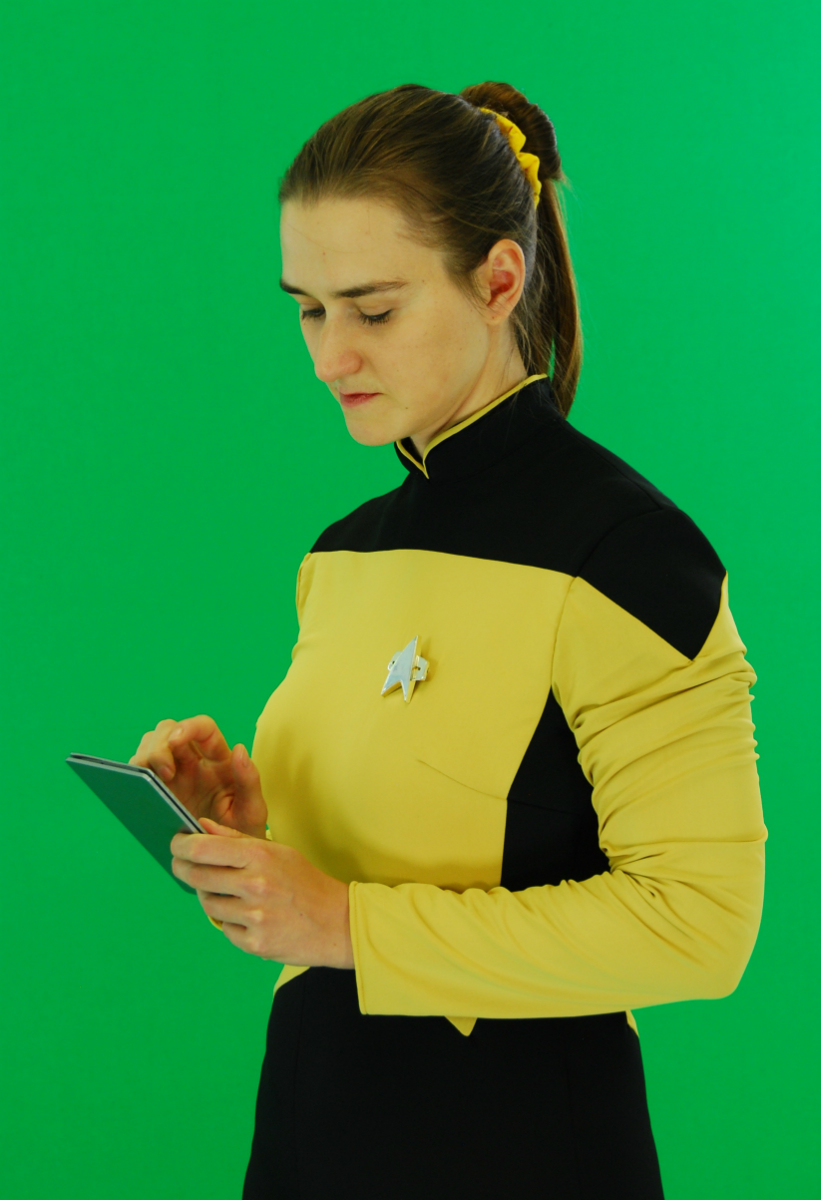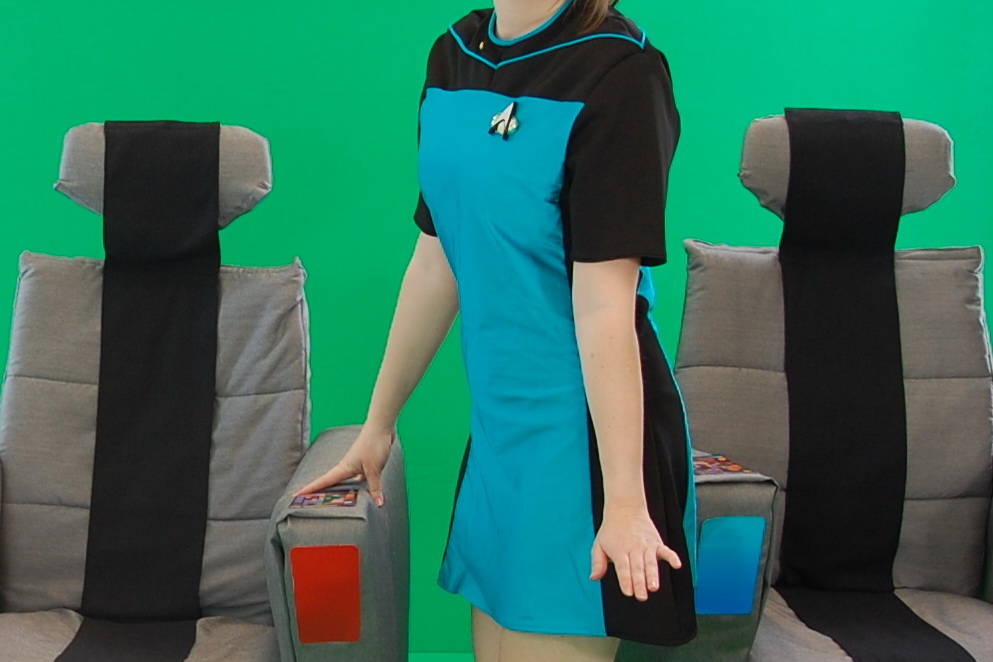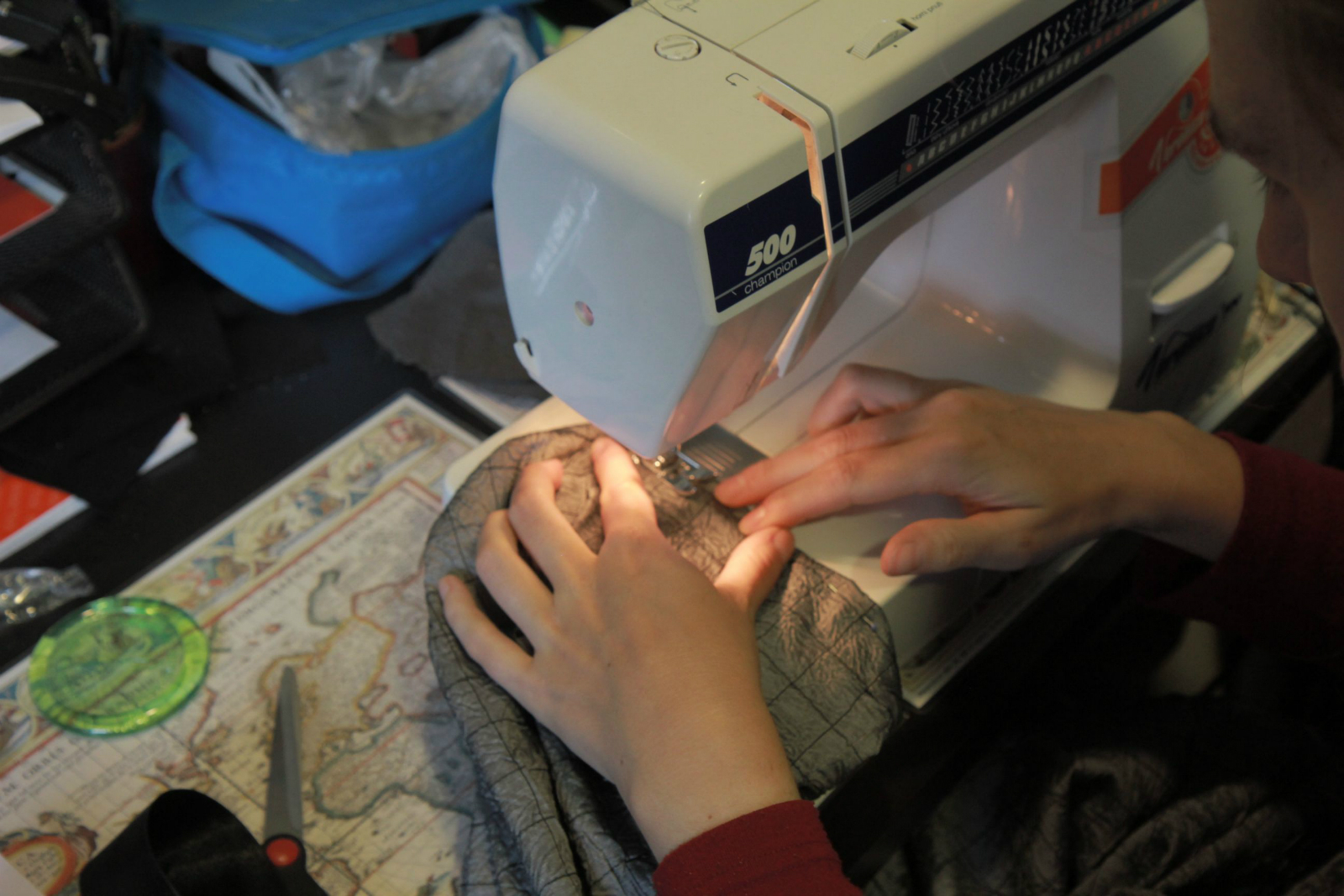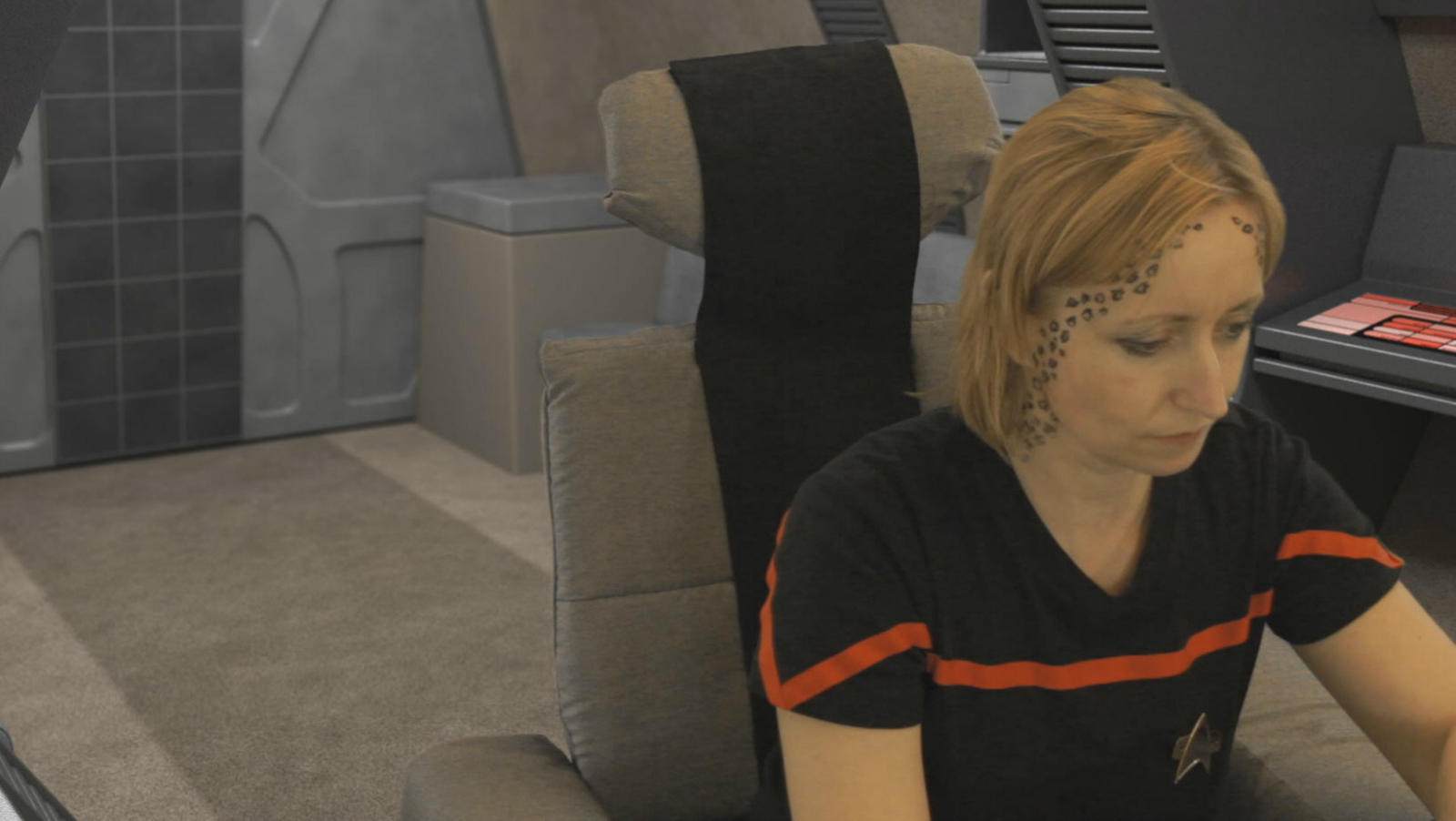 |
Star Trek – it would never be quite right without proper uniforms. Besides the Federation officers, Romulans had to be ready for shooting too. And in two types of uniforms: military and diplomatic. Preparation of these costumes and the other things was done by Zuzana “Zana” Belinova – read about what it takes here. |
| |
|
| |
What uniforms and costumer have you been sewing for the fan film? |
 |
Several uniforms and costumes. The Romulan costumes were made specially for the fanfilm (two military uniforms and two suits for the diplomats). We also used several uniforms in the fan film that I made before – two two-piece TNG uniforms, one single-piece and one short uniform. These uniforms appear multiple times in the fan film and are worn by different people. A surprise was that the one-piece uniform I sew for myself ended up serving several different actors. And that’s even though the one-piece has to be a close fit for the given person to look good. Still, this proved to be a universal size for several actors. |
| |
|
| |
Which one was the most challenging and the most interesting? |
 |
Considering the costumes sewed for the fan film, the Romulan military uniforms were both most interesting and challenging at the same time, although they were challenging for a specific reason. The fabric used on them was striped. However, the Romulan uniforms have a square-like pattern on them, and so the fabric had to be additionally “squared” – quilted with equal spacing, which was a grueling work. Considering the in fact single-purpose nature of these costumes, I tried to make it somewhat simple which is why it was much less demanding compared to other costumes I made, like the Q judge costume, for example. |
 |
It was also interesting to create the extra-wide shoulders on the military costumes. In addition to using foam as a reinforcement, which was the original idea, I had to add a plastic reinforcement as well to make sure that the shoulders stay in place. However, the plastic did make the fighting scenes a bit more dangerous because a side hit made the plastic go into the neck. Fortunately, everything ended well, even though one actor looked like someone attempted to decapitate him after the shooting wrapped. |
| |
|
| |
How did you get to this? Is this a hobby of yours? |
 |
Sewing and other manual work (crochet, knitting) has been a hobby of mine since childhood when I was sewing for dolls and stuffed animals. I sew things for regular wear only rarely – on the other hand, it never even occurred to me to pay for Star Trek costumes. First, they’re expensive, second, it would be a shame not to bind two of my hobbies together – manual work and Star Trek. I sew mainly for my own (family) needs, but even that is getting slightly out of hand – I have around 10 pairs (for me and my husband) of Star Trek costumes from pretty much all eras, and more costumes for our little girl are getting on the top of that. And to make things worse, someone occasionally manages to convince me to sew a costume for some event – like a fanfilm. |
 |
I like sewing, even though I do get quite annoyed in some phases of it (the stories my family could tell…) – especially when I’m having trouble figuring out how to achieve the desired look, when the look doesn’t look right even after the first try, when I’m facing modifications and have to re-do things. |
| |
|
| |
How are the patterns made, what are the costumes based on? |
 |
I always create the patterns for a costume the same way. It’s based on a detail-oriented watching of the movies where the costume can be seen. I try to see how the costume behaves and what fabric it could be made from, where the seams are, zippers, and so forth. The pattern is then based on another costume that’s done already or on a regular piece of clothing – I create the pattern according to that. As I keep making more and more costumes, I already have several well-proven patterns for different kinds of uniforms, and that makes the pattern creation easier. I don’t try to download them from the internet – I don’t like searching for them, and one still has to do the tailoring to make sure it fits the given figure. |
 |
I had two inspirations for the Romulan costumes for the Secret Games. It was the Koval costume from the DS9 episode “Inter Arma, Enim Silent Leges” for the diplomatic costumes, and the costumes of the Romulan empire refugees from the TNG episode “Face of the Enemy”. The same episode served as an inspiration for the costumes of Romulan soldiers. I only say inspiration on purpose, since I did not even try to duplicate the exact same look, considering the highly specific fabrics used on Romulan uniforms. On the other hand, it’s easy to see throughout the shows that the costumes kept changing and changing, and that making sure the costumes stay the same isn’t easy even for the pros. |
| |
|
| |
Is it a challenge to find the right fabrics? How does a hunt like that look like? |
 |
Getting your hands on the right fabric is a seriously difficult job, and uncertain and unreal. It is complicated by the fact that the costumes look different in the movie than in reality. And finding the exact same fabric is a practical impossibility, unless it’s a simple single-color fabric. I must admit that I don’t dedicate too much effort to total exactness against the original. It’s more important for me to make sure that the costume is made within a reasonable timeframe, is ready to wear and not that expensive, to avoid someone being afraid to use it and maybe get it dirty. |
 |
On the other hand, this doesn’t mean that I don’t spend a lot of time watching the movies or episodes that include the given costume, and then a lot of time “hunting” for the right fabric. I have a list of several stores in Prague where I go to find certain kinds of fabrics, so I know where to go when I’m looking for a fabric that’s inexpensive, but specific somehow, a high-quality single color fabric and so on. I have to note at the same time that the fabrics and the sewing of the costumes do not guarantee success. The costume is not complete without the props like badges, belts, weapons and the like. And that’s not done by me – that’s a contribution of other members of the team, especially Margh, and we used badges from Tai as well. |
| |
|
| |
Costumes aside – you also made the pilot chair, for example, or the cover that gave it the right look, to be more exact. What does it take to manufacture a chair like that? |
 |
The chairs were made in cooperation with Annie, our director, who supplied the idea, the fabrics and the actual chair itself (her own work chair). As a coincidence, we happen to have the exact same chair at home, which gave us the idea to make two chairs (although I didn’t really like it). |
 |
A requirement for the seats was to make the covers so that they’re not permanently sewed onto them, so that they’re removable. After all, those were our chairs. That commanded the use of Velcro to make sure that the covers can be removed without ripping. Sadly, that did have a negative impact on the look to some extent, and I also did not expect the need of other than front shots. That’s why it’s possible to see a bit more “under the hood” from the other angles, you can see how the covers are kept in place. However, the end result was improved a lot by the armrests made of fabric-covered cardboard that were done by Annie |














